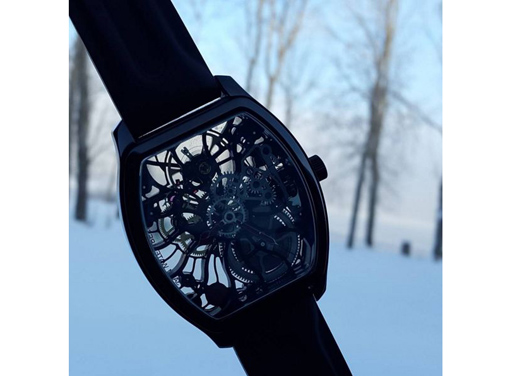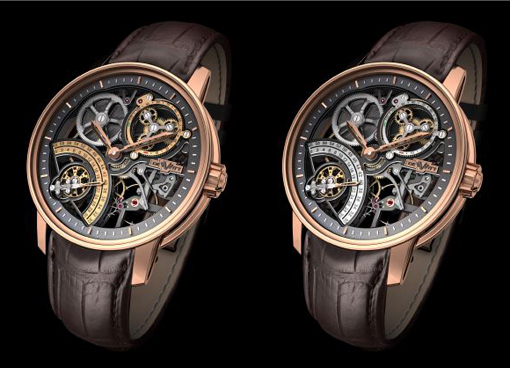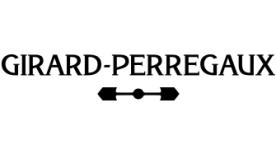Skeleton watches are breathtakingly beautiful and require extraordinary technical mastery. The watchmakers that take up the challenge are well aware that the result has to be not only aesthetically harmonious, it must be technically faultless. Putting the watch’s entire mechanical workings on display elevates it to a new level. Worldtempus has selected some of the most stunning examples.
Claude Meylan – Tortue Rainbow
Claude Meylan is a master of the art of skeletonising, and is considered one of the foremost exponents in Switzerland’s Vallée de Joux. The Tortue collection is a perfect illustration of this technical feat. This year, the new Tortue Rainbow offers a new face for the in-house 165 CM16 movement. The gears of the manual-winding mechanical movement are sandwiched between bridges and mainplate, which mirrors the colour of the hands and sets up an inspired play of colour. The watch is available in seven different colours – red, orange, yellow, green, blue, indigo or violet – hence the name...

DeWitt – Academia Skeleton
The sober ‘black gold’ of the Academia Skeleton embodies the watch’s pure and harmonious aesthetic. DeWitt has taken great care over the hand-finishing of this timepiece, whose bridges feature chamfered inner angles. Its most unusual feature, however, is the bi-directional seconds hand at 7 o’clock. After 30 seconds, a clutch system on the seconds hand engages and the pointer jumps instantaneously back to its starting position before setting off in the opposite direction to count off the remaining 30 seconds. The sapphire exhibition case back reveals that the gear wheels are delicately carved in relief, giving a sense of volume and perspective to the movement.
The skeletonised hand-wound movement, with its regular architectural construction, is powered by a double barrel, increasing the power reserve (indicated at 1 o’clock) to 100 hours. Based on the satellite principle that saw its début in the Tourbillon Différentiel, and was recognised in the Innovation category at the 2005 GPHG, the remaining power reserve is indicated by an arrow located on a continuously rotating differential.

Girard-Perregaux – 1966 Skeleton
Girard-Perregaux has elevated transparency into a material in its own right. The new 1966 Skeleton is a harmonious blend of aesthetic purity and complexity. Its 13¼-ligne self-winding calibre beats at 28,000 vph, giving the timepiece a power reserve of 54 hours. The movement, a variation of the GP1800 calibre, is galvanised and finished with a metallic grille-type effect.
The mechanical beauty of the piece lies in its minimalist design that lays bare every gear, lever, spindle and screw, which normally remain out of sight. Girard-Perregaux has gone one step further and skeletonised the solid gold rotor, which is plainly visible through the sapphire caseback. The dial is non-existent; the timepiece is brought together by an external ring with suspended index markers, and delicate leaf-type hands. The 1966 Skeleton is an objet d’art. Telling the time is just a pretext.










